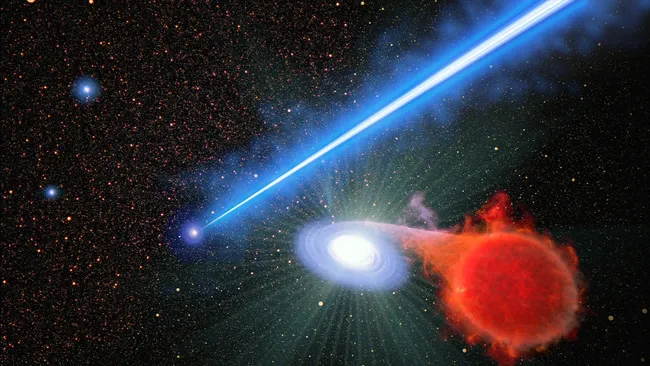Astronomers using the Hubble Space Telescope have discovered a gigantic "blowtorch-like" jet blasting out of a black hole — and it seems to be causing nearby stars to explode.
The 3,000-light-year-long trail of flaming plasma is beaming out from a supermassive black hole with a mass 6.5 billion times that of the sun in the center of the galaxy M87.
Getting caught in this beam would be deadly for any cosmic object, but according to new observations, even being in its vicinity can be devastating.
The superheated energy beam appears to be causing nearby star systems to erupt in explosions called novas.
As material approaches a black hole's "mouth," friction causes it to heat up and emit light trillions of times more luminous than the brightest stars that can be detected by telescopes.
Occasionally, active black holes funnel this infalling matter into gargantuan energy jets that spew into space, sometimes spanning entire galaxies.
Source
The 3,000-light-year-long trail of flaming plasma is beaming out from a supermassive black hole with a mass 6.5 billion times that of the sun in the center of the galaxy M87.
Getting caught in this beam would be deadly for any cosmic object, but according to new observations, even being in its vicinity can be devastating.
The superheated energy beam appears to be causing nearby star systems to erupt in explosions called novas.
As material approaches a black hole's "mouth," friction causes it to heat up and emit light trillions of times more luminous than the brightest stars that can be detected by telescopes.
Occasionally, active black holes funnel this infalling matter into gargantuan energy jets that spew into space, sometimes spanning entire galaxies.
Source






















